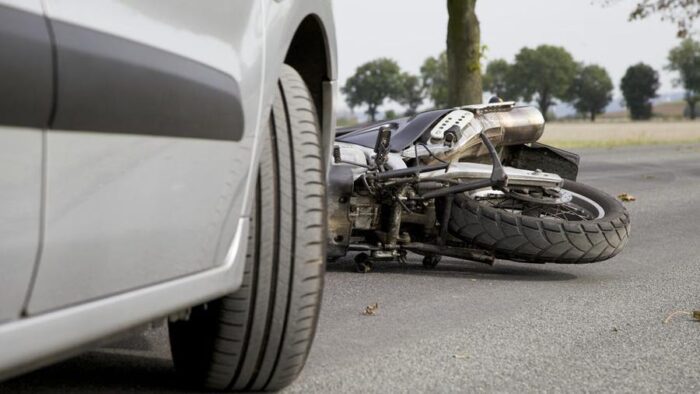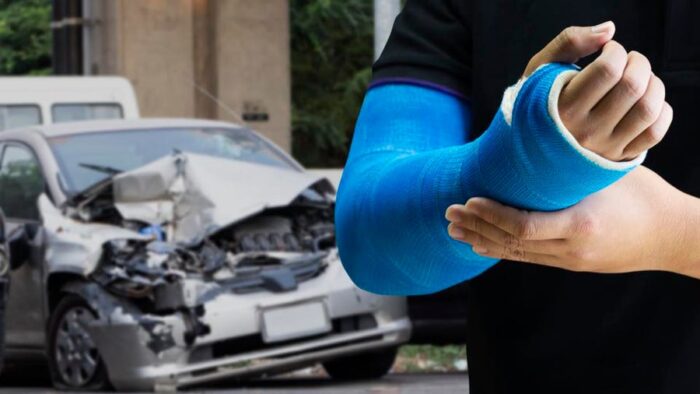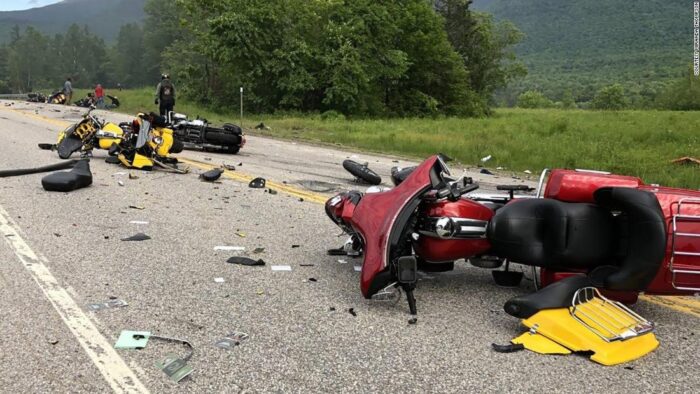Motorcycle accidents can be devastating and life-changing events, often resulting in serious injuries or even fatalities. When a motorcycle accident occurs, determining who is liable can be a complex and challenging process without the help of a lawyer.
From gathering evidence and interviewing witnesses to analyzing police reports and medical records, motorcycle accident lawyers leave no stone unturned in their pursuit of justice for their clients.
So, if you’ve been involved in a motorcycle accident and are wondering how a motorcycle accident attorney can help you prove liability, read on to learn more about the process and the important role that lawyers play in securing compensation for their clients.
In this article, we’ll explore the various methods that a motorcycle accident lawyer will use to prove liability after a motorcycle accident.
Table of Contents
The Burden of Proof in Motorcycle Accident Cases

For an injured victim to recover compensation, they must first establish that the other driver was at fault for the accident. This is known as the burden of proof, and it typically falls upon the victim or your motorcycle accident lawyer to establish the defendant’s negligence or recklessness.
To do so, attorneys usually utilize various types of evidence, such as eyewitness accounts, photographs or videos from the scene, police reports, expert witness testimony, and more. Additionally, traffic laws that pertain to motorcycles may come into play when determining fault in an accident.
Factors That May Help Prove Liability After a Motorcycle Accident

Certain factors can help strengthen the plaintiff’s case when establishing liability after a motorcycle accident.
1. Negligence
If the other driver acted negligently and failed to exercise reasonable care while operating their vehicle, they might be liable for any resulting damages and losses. Examples of negligent behavior include driving under the influence of drugs or alcohol, speeding, failing to obey traffic laws, etc.
Similarly, reckless behavior like swerving through traffic or tailgating can also result in liability if it caused or contributed to the accident.
2. Automobile Defects or Malfunctions
If an automobile defect or malfunction caused or contributed to the accident, then this can increase the defendant’s potential liabilities. For example, if faulty brakes led to an inability to stop in time and resulted in an injury, the manufacturer of the defective product may bear some responsibility for the injury.
In cases where an automobile defect is involved, experienced attorneys can often bring in expert witnesses such as mechanics or engineers to help prove fault on the part of the product’s manufacturer.
3. Road Conditions
If poor road conditions caused or contributed to an accident, this could provide another source of liability for the defendant. In these cases, attorneys will investigate improper road maintenance’s role in causing the accident.
For example, if potholes, poor signage, inadequate lighting, or debris from construction sites played a role in causing an injury, then the responsible government entity could be liable for negligence.
4. Driving Without a Valid Licence
Another factor that might contribute to liability is when the defendant was driving without a valid license or had had their license suspended before the accident. In this situation, the individual would be considered at fault because having a valid license is legally required for anyone operating a motor vehicle.
Furthermore, even if the person had a valid license but were not authorized to drive during the accident due to suspension, they would still be considered at fault.
5. Weather Conditions
In some instances, inclement weather conditions, such as heavy rain, snow, fog, or ice, can lead to an accident occurring. Depending on the circumstances, weather conditions may have been outside either party’s control, but in cases where the weather was foreseeable, yet one party did not take adequate precautions to account for it, they may be considered at fault.
What to Do If You’ve Been Involved in a Motorcycle Accident?
First, you should seek medical attention immediately, even if you don’t think you were seriously injured. Next, document the crash site by taking photos or gathering witness contact information if possible.
Finally, contact an experienced motorcycle accident attorney right away. An experienced motorcycle accident lawyer will be able to assess your legal options, build a strong case against the negligent party, negotiate with insurers on your behalf, and fight to get you the maximum compensation you deserve. With their help, you can ensure you receive just and fair compensation for your medical bills, lost wages, pain and suffering, and other related expenses.
Common Injuries Sustained in Motorcycle Accidents

Motorcycle accidents often result in severe and even catastrophic injuries for the rider. Unfortunately, a motorcycle’s lack of external protection exposes its riders to harm. Here is a list of typical wounds suffered in motorbike collisions:
1. Head injuries
The most severe injuries from a motorbike collision might include head injuries. These injuries can range from minor concussions to severe brain damage or death. Motorcycle riders are especially prone to head injuries because an enclosed vehicle does not protect them.
2. Neck Injuries
Neck injuries are also common in motorcycle accidents, as riders are likely to be thrown off their bike during an accident. Neck injuries can range from minor neck strain or whiplash to more severe nerve or spinal cord damage.
3. Leg and Foot Injuries
Motorcycle accidents frequently result in leg and foot injuries, particularly when the rider is flung from the bike. Road rash, torn ligaments, and shattered bones are common leg and foot injuries.
4. Spinal Cord Injuries
When the spinal cord is injured or severed, it can cause permanent paralysis and even death. Spinal cord injuries are a leading cause of death among motorcyclists.
5. Soft Tissue Injuries
Soft tissue injuries include bruising, muscle strains, and sprains. These injuries may not appear severe but can lead to chronic pain and long-term disability if not treated properly.
6. Internal Organ Damage
Internal organ damage occurs when organs such as the heart, lungs, or liver become bruised or ruptured due to the force of the impact. This type of injury can cause severe complications and even death if not treated promptly.
7. Emotional Distress
Emotional distress would be a common side effect of a motorcycle accident, significantly if the rider were severely injured or killed. Emotional distress can manifest as anxiety, depression, post-traumatic stress disorder, and other psychological issues.
In Conclusion
Motorcycle accidents can cause severe injuries and damage to the rider and any other vehicles or pedestrians involved. Establishing liability after a motorcycle accident is essential to ensure that those affected receive appropriate compensation. To do this, a motorcycle accident lawyer must consider a variety of factors, including the negligence of another party or parties, to determine who was at fault.
Common injuries sustained in motorcycle accidents can range from scrapes and bruises to broken bones and death. Knowing how to prove liability after a motorcycle accident can be vital in ensuring that victims receive justice.
With the proper legal representation, injured parties can rest assured that their case will be handled with care and attention.

